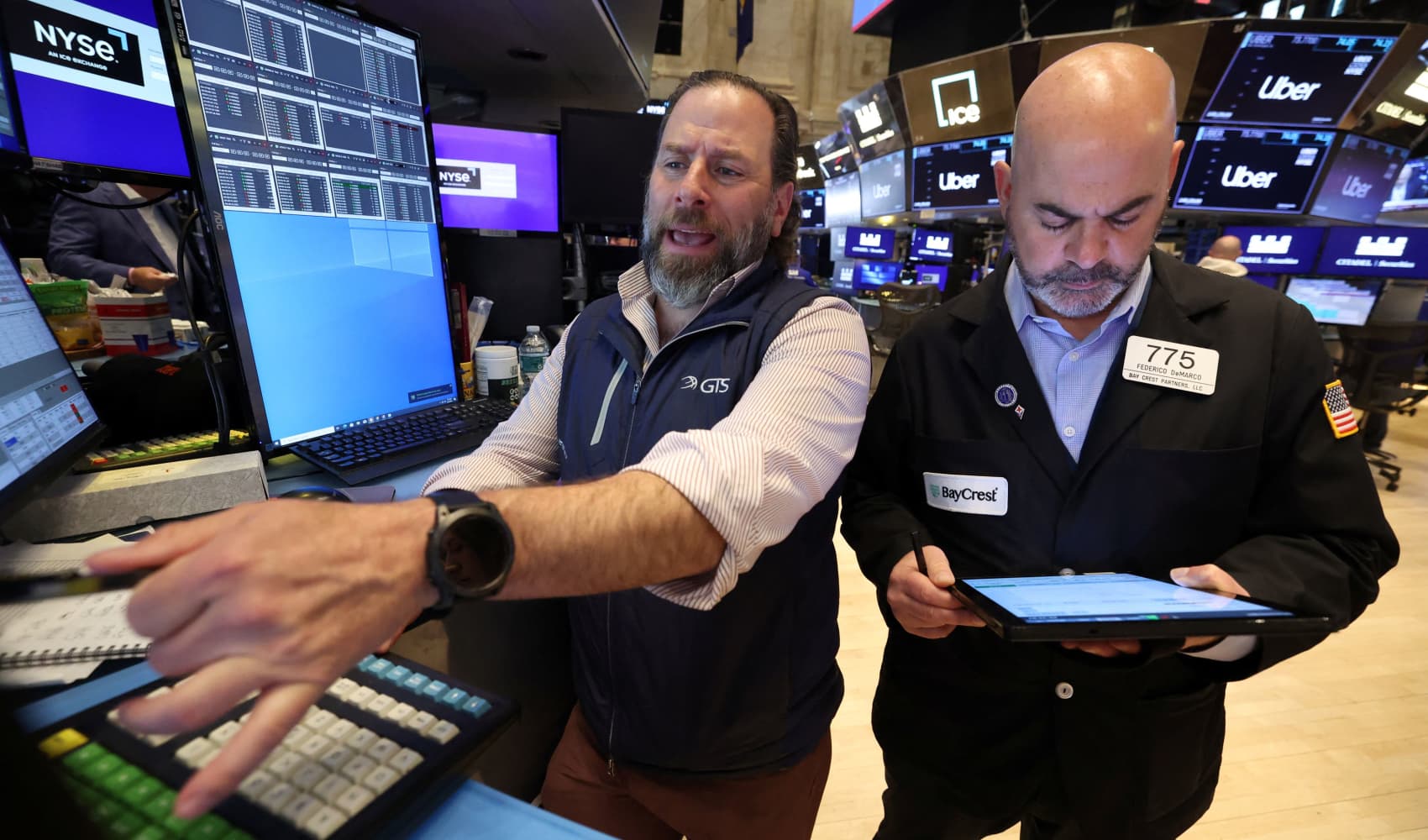Balancing Saving and Investing: Learn From Buffett's Cash Hoard
Is Your Cash Pile Too High? Experts on Balancing Saving and Investing Like Buffett
Introduction: The Cash Conundrum
In times of market uncertainty, that familiar urge to hoard cash can be strong. After all, a hefty savings account feels like a comforting security blanket, right? But what if I told you that you might be missing out by keeping too much cash on the sidelines? Think of it like this: your money, like a plant, needs sunlight (investment) to grow. Too much shade (cash) and it'll just sit there, not exactly thriving.
We're not alone in this dilemma. Even the Oracle of Omaha, Warren Buffett, grapples with the save-versus-invest question. New market turbulence may tempt investors to have more cash set aside. But experts warn it’s possible to have too much money in savings. Buffett's Berkshire Hathaway is sitting on a mountain of cash, but is that the best strategy for *you*? Let’s dive into how to strike the right balance.
Buffett's Billions: A Special Case
Warren Buffett is sitting on a record amount of cash. At the end of last year, Buffett’s conglomerate Berkshire Hathaway had a staggering $334 billion in cash. While this figure might sound like a green light to stash away your hard-earned dollars, remember that Buffett operates on a completely different scale than the average investor. He manages massive sums, and finding suitable investments for that kind of capital is a unique challenge.
It's important to remember that "despite what some commentators currently view as an extraordinary cash position," the majority of the money invested in Berkshire is in equities, as Buffett mentioned in a recent shareholder letter. This highlights a key distinction: Buffett holds a lot of cash, but he *also* has a massive portfolio of stocks. Berkshire will never prefer ownership of cash-equivalent assets over the ownership of good businesses, whether controlled or only partially owned."
Why Too Much Cash Can Be Detrimental
The Silent Killer: Inflation
Imagine your cash is a melting ice cream cone. Inflation is the hot summer day that's slowly but surely diminishing its size. Inflation erodes the purchasing power of your savings over time. What a dollar can buy today, it won't buy in a year or two, thanks to rising prices. That's why simply holding onto cash for the long term is often a losing proposition.
Opportunity Cost: Missing Out on Growth
Think of your cash as a seed. Buried in the ground, it has the potential to grow into something amazing. But if you just leave it there, it’ll never reach its full potential. The same is true for your money. By keeping too much cash on the sidelines, you're missing out on potential investment gains. Stocks, bonds, and other assets can offer returns that far outpace inflation, allowing your wealth to grow over time.
Determining Your Ideal Cash Reserve
The 3-6 Month Rule: A Good Starting Point
Most financial advisors recommend having 3-6 months' worth of living expenses in a readily accessible savings account. This "emergency fund" acts as a financial cushion in case of unexpected job loss, medical bills, or other unforeseen circumstances. It's your safety net, preventing you from having to dip into your investments or take on debt in a crisis.
Personalizing Your Emergency Fund
The 3-6 month rule is a good starting point, but your ideal cash reserve might be higher or lower depending on your individual circumstances. Consider these factors:
- Job Security: If you work in a stable industry with high demand, you might be comfortable with a smaller emergency fund. If your job is more volatile, a larger cushion is advisable.
- Health Insurance: A high-deductible health plan might warrant a larger emergency fund to cover potential out-of-pocket medical expenses.
- Debt Levels: If you have significant debt, prioritize paying it down before building a large cash reserve. High-interest debt is a drain on your finances.
- Lifestyle: If you have a simpler lifestyle with lower expenses, you might not need as much cash on hand.
Diversifying Your Investments: Beyond Cash
Stocks: For Long-Term Growth
Stocks represent ownership in companies and offer the potential for significant long-term growth. However, they also come with higher volatility. Consider investing in a diversified portfolio of stocks, either through individual stocks or through index funds and ETFs.
Bonds: For Stability and Income
Bonds are debt instruments issued by governments and corporations. They are generally less volatile than stocks and provide a stream of income in the form of interest payments. Bonds can help to stabilize your portfolio and reduce overall risk.
Real Estate: A Tangible Asset
Real estate can be a valuable addition to a diversified portfolio. It provides both potential appreciation and rental income. However, real estate is also less liquid than stocks and bonds, and it requires ongoing management.
Alternative Investments: Exploring Other Options
Alternative investments, such as private equity, hedge funds, and commodities, can offer diversification and potentially higher returns. However, they are typically more complex and illiquid than traditional investments and are best suited for sophisticated investors.
Rebalancing Your Portfolio: Staying on Track
Over time, your investment portfolio will naturally drift away from your target allocation due to market fluctuations. Rebalancing involves periodically selling some assets that have performed well and buying assets that have underperformed to bring your portfolio back into alignment. This helps to maintain your desired risk level and ensure that you're not overly concentrated in any one asset class.
Dollar-Cost Averaging: Investing Consistently
Dollar-cost averaging is a strategy of investing a fixed amount of money at regular intervals, regardless of market conditions. This helps to smooth out the ups and downs of the market and reduce the risk of investing a large sum at the wrong time. It’s like planting a seed every week, regardless of the weather – consistently growing your garden over time.
The Psychology of Saving and Investing
Overcoming Fear and Greed
Our emotions can often get in the way of rational investment decisions. Fear can lead us to sell investments at the bottom of the market, while greed can tempt us to chase after speculative bubbles. It's important to be aware of these biases and develop a disciplined investment strategy that is based on your long-term goals, not on short-term market fluctuations.
The Power of Compounding
Albert Einstein famously called compound interest the "eighth wonder of the world." Compounding is the process of earning returns on your initial investment *and* on the accumulated interest or gains. Over time, this can lead to exponential growth of your wealth. The earlier you start investing, the more time your money has to compound.
Seeking Professional Advice
Navigating the world of saving and investing can be complex. Consider consulting with a qualified financial advisor who can help you assess your financial situation, develop a personalized investment plan, and provide ongoing guidance. A good financial advisor will act as your partner, helping you to stay on track towards your financial goals.
Tax-Advantaged Accounts: Maximizing Your Savings
Take advantage of tax-advantaged retirement accounts, such as 401(k)s and IRAs. These accounts offer tax benefits that can help you save more for retirement. Contributing to a 401(k) can often provide a company match, essentially free money towards your retirement savings.
Automating Your Savings and Investments
Set up automatic transfers from your checking account to your savings and investment accounts. This makes saving and investing effortless and ensures that you're consistently putting money towards your financial goals. Treat your savings and investments like any other essential bill, and prioritize them in your budget.
The Importance of Financial Literacy
Take the time to educate yourself about personal finance and investing. The more you understand about how money works, the better equipped you'll be to make informed decisions and achieve your financial goals. There are countless resources available online, in libraries, and through financial education courses.
Retirement Planning: The Long Game
Retirement planning is a marathon, not a sprint. Start planning early and consistently save and invest throughout your career. Consider your desired lifestyle in retirement, estimate your expenses, and determine how much you'll need to save to reach your goals. Revisit your retirement plan regularly and make adjustments as needed.
Conclusion: Finding Your Financial Sweet Spot
Warren Buffett's cash hoard is a unique situation, not necessarily a model for everyday investors. While having an emergency fund is crucial, holding *too* much cash can be detrimental due to inflation and missed investment opportunities. The key is to find your personal financial sweet spot – a balance between having enough cash on hand for emergencies and investing for long-term growth. By diversifying your investments, rebalancing your portfolio, and seeking professional advice when needed, you can build a secure financial future.
Frequently Asked Questions
Q1: How much cash should I have in my emergency fund?
A1: The general rule of thumb is 3-6 months' worth of living expenses. However, you should adjust this based on your job security, health insurance deductible, debt levels, and lifestyle.
Q2: What's the best way to invest if I'm just starting out?
A2: Consider starting with low-cost index funds or ETFs, which offer diversification and are easy to manage. Dollar-cost averaging can also be a helpful strategy for beginners.
Q3: How often should I rebalance my investment portfolio?
A3: Rebalancing frequency depends on your risk tolerance and investment strategy. A good starting point is to rebalance annually or whenever your portfolio deviates significantly from your target allocation (e.g., by 5-10%).
Q4: Is it better to pay off debt or invest?
A4: It depends on the interest rate of your debt. If you have high-interest debt (e.g., credit card debt), prioritize paying it down. If you have low-interest debt (e.g., a mortgage), you may be better off investing.
Q5: How can I overcome my fear of investing?
A5: Start by educating yourself about investing. Invest a small amount of money to get comfortable with the process. Focus on the long-term and avoid making emotional decisions based on short-term market fluctuations.









